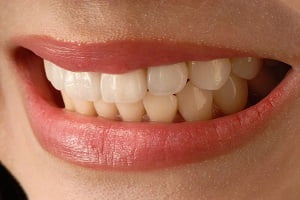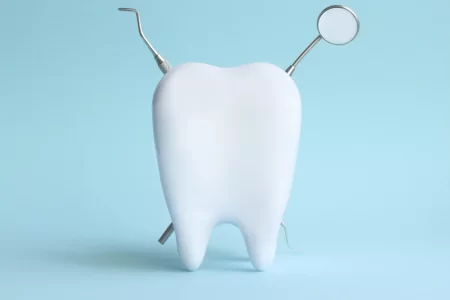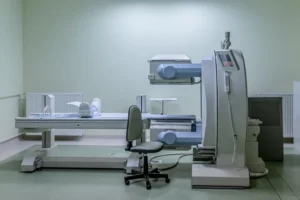Teeth Bonding (Dental Bonding)
- Updated on: Jul 6, 2024
- 5 min Read
- Published on Feb 10, 2020

Introduction to Tooth Bonding
A colored composite resin or bonding (adhesive) material whose color is similar to the tooth color binds the broken pieces of the damaged or decayed tooth. Chips, discoloration, cracks, spaces, shape of teeth, etc. all can be repaired with the help of dental bonding, and this can also help in avoiding the need for lengthy dental procedures and treatment. The durable plastic and glass bond material is hardened with the help of high-intensity light, which embraces the strength and translucency, and the tooth structure can be restored. This is best used for cosmetic purposes to enhance appearance.
When Is Tooth Bonding Recommended?
- For the repair of chipped, cracked, broken, or decayed teeth (composite resins are used to fill cavities)
- Tooth bonding is done to fill gaps or spaces between teeth.
- Composites help to make teeth look longer.
- The color and appearance of the discolored teeth can also be changed, or the color of the tooth can be made to match the color of the adjacent teeth with tooth bonding.
- Bonding helps in changing the crooked shape of teeth.
- Bonding material or composite can be used as a cosmetic alternative to amalgam fillings.
- Bonding helps to protect a portion of the tooth’s root that has been exposed due to gum recession.
- It is also used as an alternative to amalgam fillings.
- Bonding is a good option for teens for a permanent type of dental restoration.
Procedure for Tooth Bonding
The complete process of bonding takes a maximum of one hour, and no anesthesia is required until dental filling also needs to be done.
Preparing Tooth Before Applying Bonding Material: The surface of the tooth to be bonded is made plaque-free by cleaning it, and then it needs to be “etched” to roughen it with the help of an acidic gel (gentle phosphoric acid) that opens pores on the tooth surface. This also is supposed to be the conditioning gel because due to this the composite adheres to the tooth surface.
Applying the Bonding Material: The acidic gel is slightly washed off, and then the composite resin material is molded and applied to the tooth. The putty-like resin is then smoothened to obtain the desired shape and is made hard by a special curing bright (ultraviolet) laser light. As the first layer settles, the second layer is applied or painted to cure. Layers are applied depending upon the thickness required to restore the tooth.
Shaping the Tooth: Dental drill is used to bring the tooth into the right form and give the tooth’s required shape. After obtaining the exact shape and size, and color, polishing and giving a finish to the tooth comes as a final touch.
Read About Basics of Dental Caries (Tooth Decay and Dental Cavity)
Approximate Price and Cost for Composite Bonding
Bonding costs may vary depending on different factors such as the dental condition, the number of teeth which need to repair, the area where a person is living or the doctor is practicing, etc. It is estimated that around 200$ to 500$ are spent in case of bonding. Dental insurance generally covers bonding costs.
Maintenance of Dental Bonding
A little special care is required in dental bonding to make the teeth appear natural because bonding has a higher chance of chipping and risk of staining compared to other ways of cosmetic dentistry. Some points should be considered after dental bonding:
- Brushing teeth at least twice a day and flossing should be done at least once a day.
- Avoid biting nails, chewing pens, eating hard food such as raw carrot, etc. with the bonded tooth as it can easily chip or crack the bond.
- Smoking increases the risk of gum disease and oral cancer and affects the quality of the bonding material.
Dental Bonding Vs. Porcelain Veneers
Dental bonding and dental veneers are always compared. Dental bonding is a temporary option in-front of porcelain veneer and is more recommended to young people to improve their appearance and smile. Porcelain bonding is stronger than composite. Porcelain veneers are prepared in the laboratories in the form of thin wafer-like shells of tooth-colored materials. They are custom covers that coat the front surface of teeth to improve the appearance of the tooth.
The major difference is that porcelain veneer requires the removal of more tooth enamel than in dental bonding.
Porcelain veneers are much expensive than dental bonding, and the cost can also not be covered under dental insurance. Although, if done efficiently, porcelain veneers can stay for as long as 20 years or more.
Bonding is much delicate as compare to veneer. Therefore, it clips off quickly.
Read About Signs and Symptoms of Dental Caries (Dental Cavities or Tooth Decay)
Caring for Bonded Teeth
The same care which is required by natural teeth is also needed for bonded teeth. Healthy oral habits keep a person healthy.
- One should brush at least twice a day, and flossing at least once a day is good for oral health.
- Regular check-ups ensure clean teeth and a healthy smile.
- Avoid contact with a hard material such as chewing ice or biting nails, etc. to prevent any damage to the bonded teeth.
- The shape of the tooth changes if the tooth is chipped. In this case, the doctor checks whether the bond is broken or not.
- Teeth whitening should be done before bonding so that the color of the composite matches the adjacent teeth.
- With these simple measures, the bonding can stay for about 5-10 years.
Pros and Cons of Dental Bonding
Advantages/Pros of Dental Bonding:
- Dental bonding is the easiest, durable, and very inexpensive cosmetic dental procedure.
- There is no need to manufacture a tooth cover in the laboratory in this case as required in case of vaneers and crowns.
- The most important advantage over veneers and crowns, in this case minimal amount of tooth enamel, is removed.
- Anesthesia is not required in most of the procedures unless dental bonding is being done to fill a dental cavity.
- Tooth bonding can be used to replace amalgam fillings as traditional black fillings can be swapped with something more natural and aesthetic. Health issues are also a concern in the case of mercury contained in amalgam fillings.
- Doctors now use complete dental kits for convenience. These kits comprise all the materials required for dental bonding, have all instructions on them, and take less time for implantation.
Disadvantages/ Cons of Dental Bonding:
- The composite of dental bonding is not very strong, and therefore it does not last long.
- It requires care to be taken as it is sensitive to hard things.
- The material is not as stain-resistant as crowns or veneers.
- Dental bonding can be best used for small cosmetic changes and temporary tooth treatments to heal cracks and chips.
- The lifespan of bonding materials for the teeth
The age of the teeth’s bonding materials depends on how much bonding was done and your oral habits. Typically, however, bonding material lasts for three years to about 10 years before needing to be touched up or replaced.
It is estimated that if proper oral care is given to the teeth, bonding can last for a long time. Healthy eating and dental habits or oral care enhance the lifespan of dental bonding for 5-10 years.












